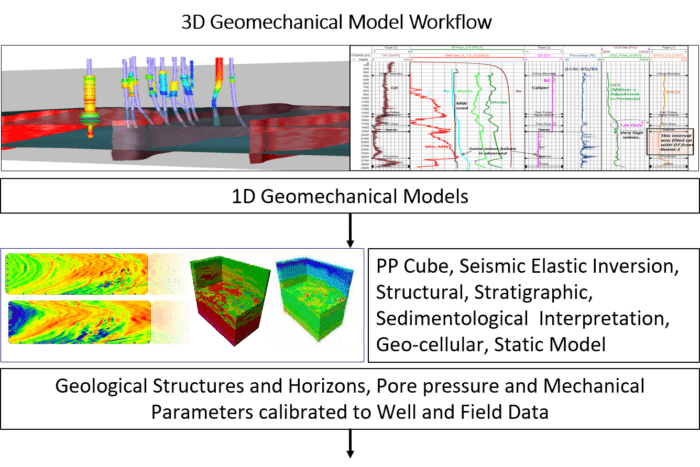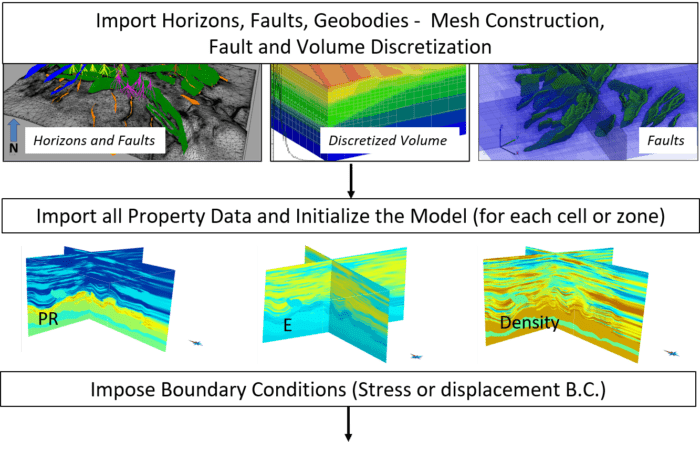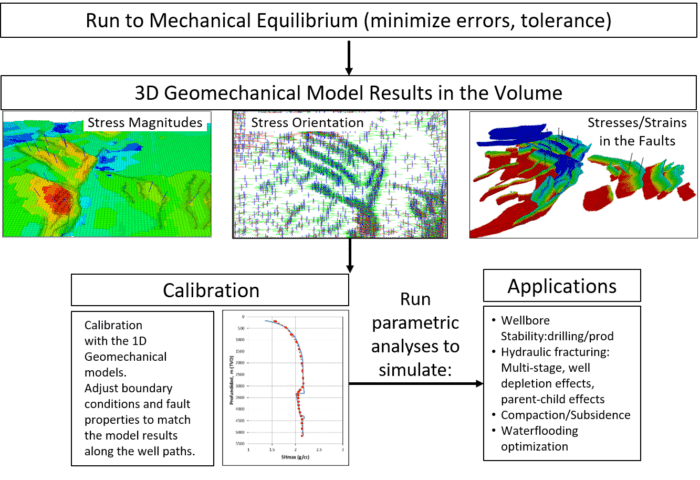A 3D geomechanical model (again, consisting of stress magnitudes and orientation, pressure and mechanical properties) is often constructed at a field or reservoir scale, though a local, sector scale is also possible. The 3D geomechanical model is constructed using information from from regional or field-scale geology, seismic and reservoir data, as well as multiple well data sets, in order to account for structural complexity, lateral stress variations, and dynamic production/injection effects often not captured in a single 1D geomechanical model. 3D geomechanical models can be constructed at nearly any size from 10 – 200 km2 or more and from the surface to depths exceeding 7 kms; however, the size of a 3D model is constrained by computational horsepower (run times), memory (number of zones or elements), and the data to feed 10 to 20 million different zones or elements.
Numerical codes for 3D geomechanical models are largely ubiquitous, particularly FEM codes. OFG most often uses the code FLAC3D to build our geomechanical models, but we are glad to use codes most suited for the client and their needs and their workflows.




